CRASlab
I developed real-time interactive tools for the Sensitive Art Resource Center (CRASlab) in Paris, Montpellier, Dakar and Bamako.
| TYPE | Software |
| DATE | |
| STACK | Pure Data |
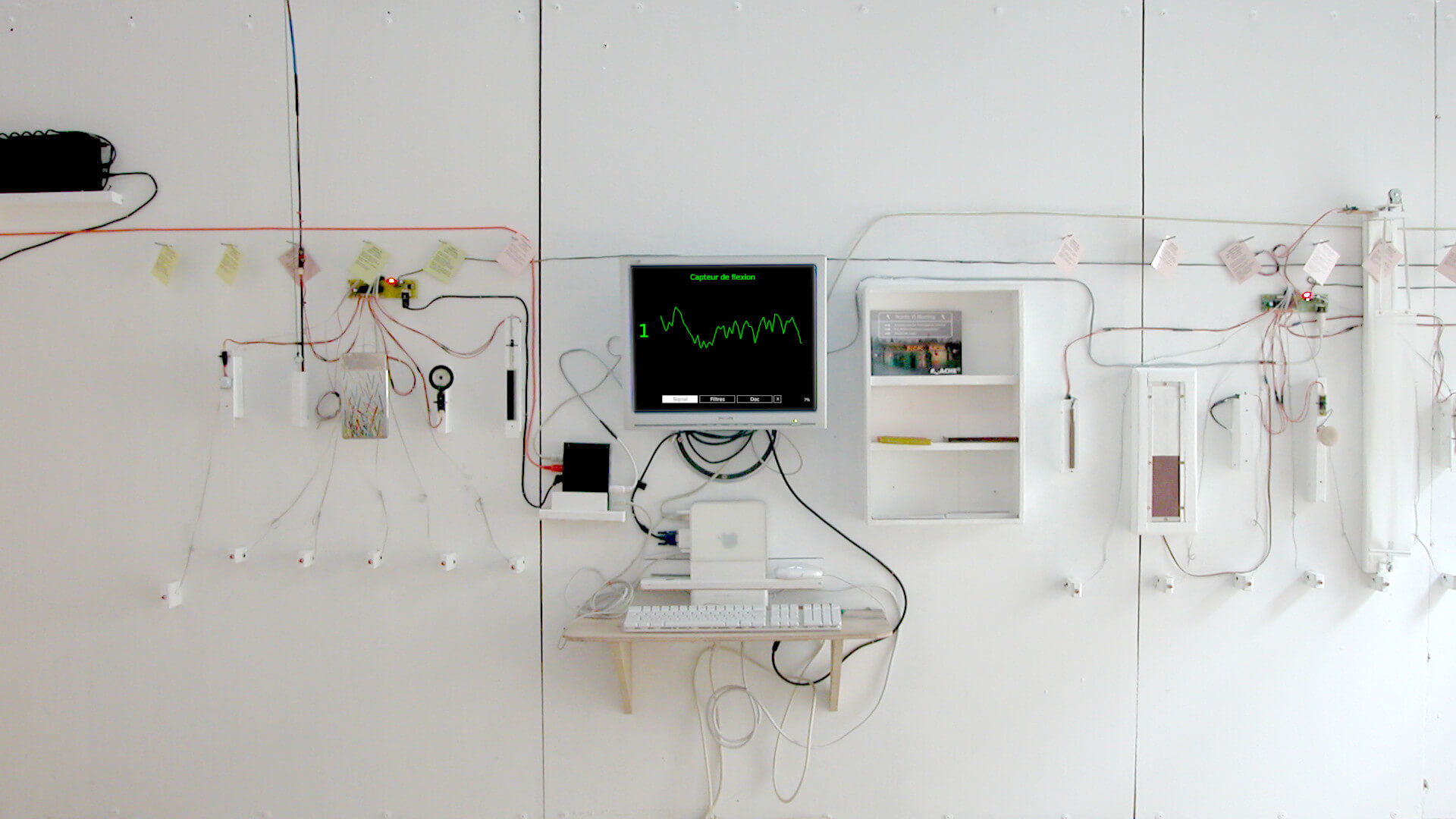
History:
- 2006: CRASlab Software v1, Mains d’Œuvres, Saint-Ouen
- 2010: CRASlab Software v2, Kawenga, Montpellier
- 2011: Valise pédagogique interactive, Kër-Thiossane, Dakar & Bamako
- 2012: CRASlab Software v3, Mains d’Œuvres, Saint-Ouen
1. CRASlab Software
The Sensitive Art Resource Center (CRASlab) is dedicated to understanding all digital cultures… The place specializes in real-time interactive digital creation, and in free cultures. The heart of this project?
• Educational tools that are easy to use, which allow us to establish a common vocabulary and structuring benchmarks to understand our technological worlds.
• A transmission around digital artistic practices: to open up possibilities, decipher preconceptions, take a technical look, and think about our relationships between technologies and societies.
This project was created in 2006, according to the original idea of Jean-Noël Montagné, artist and president of the Art Sensitif association.
1.1. The problem
The scenario:
- The user selects a sensor
- He personalizes the filters
- He finally selects an output among different processings: sound, images, 3D, light or motors.
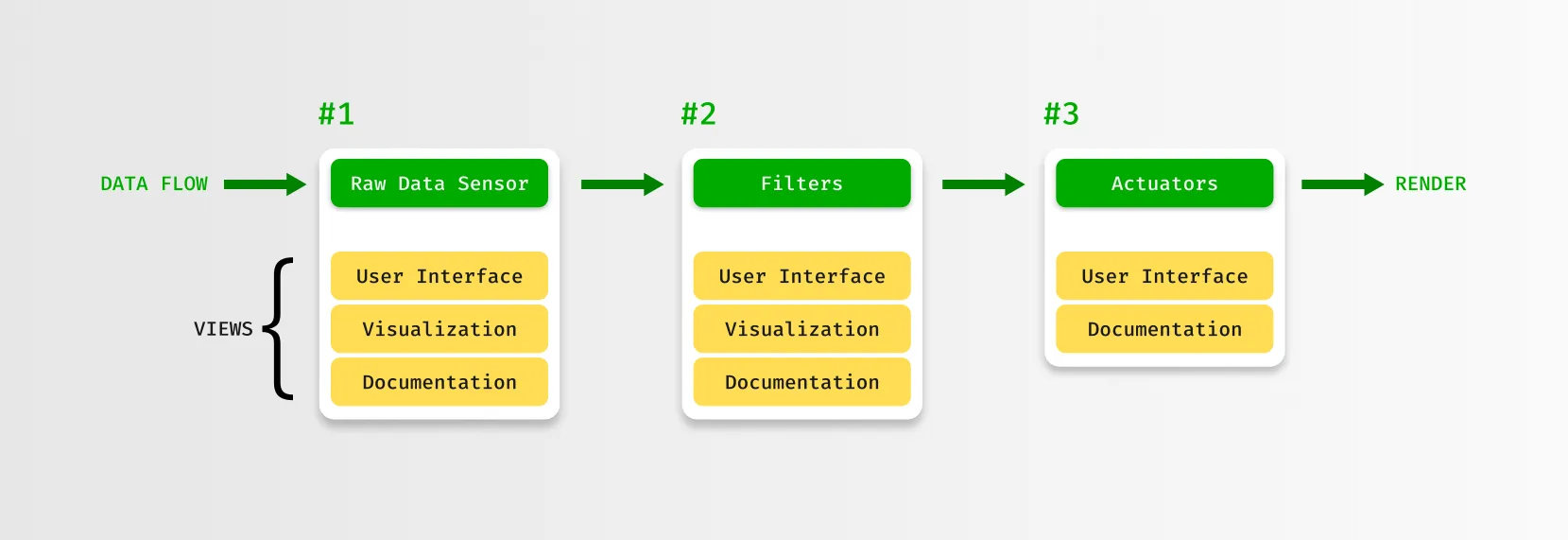
- Connect 4 computers in a LAN network
- Every computer has an interchangeable role: display raw data, filters, documentation and actuators
- View raw data as graphs
- User interface for filtering step
- User interface for actuators step
- Render different types of actuators
1.2. The solution
The software was written in Pure Data. Is is well-know language to create multimedia projects. The network features are also very convenient.
The only missing point was the User Interface. So, I’ve developed pd-gem-ui, a Pure Data library to handle all user interactions and display features needed as the graph oscilloscope.
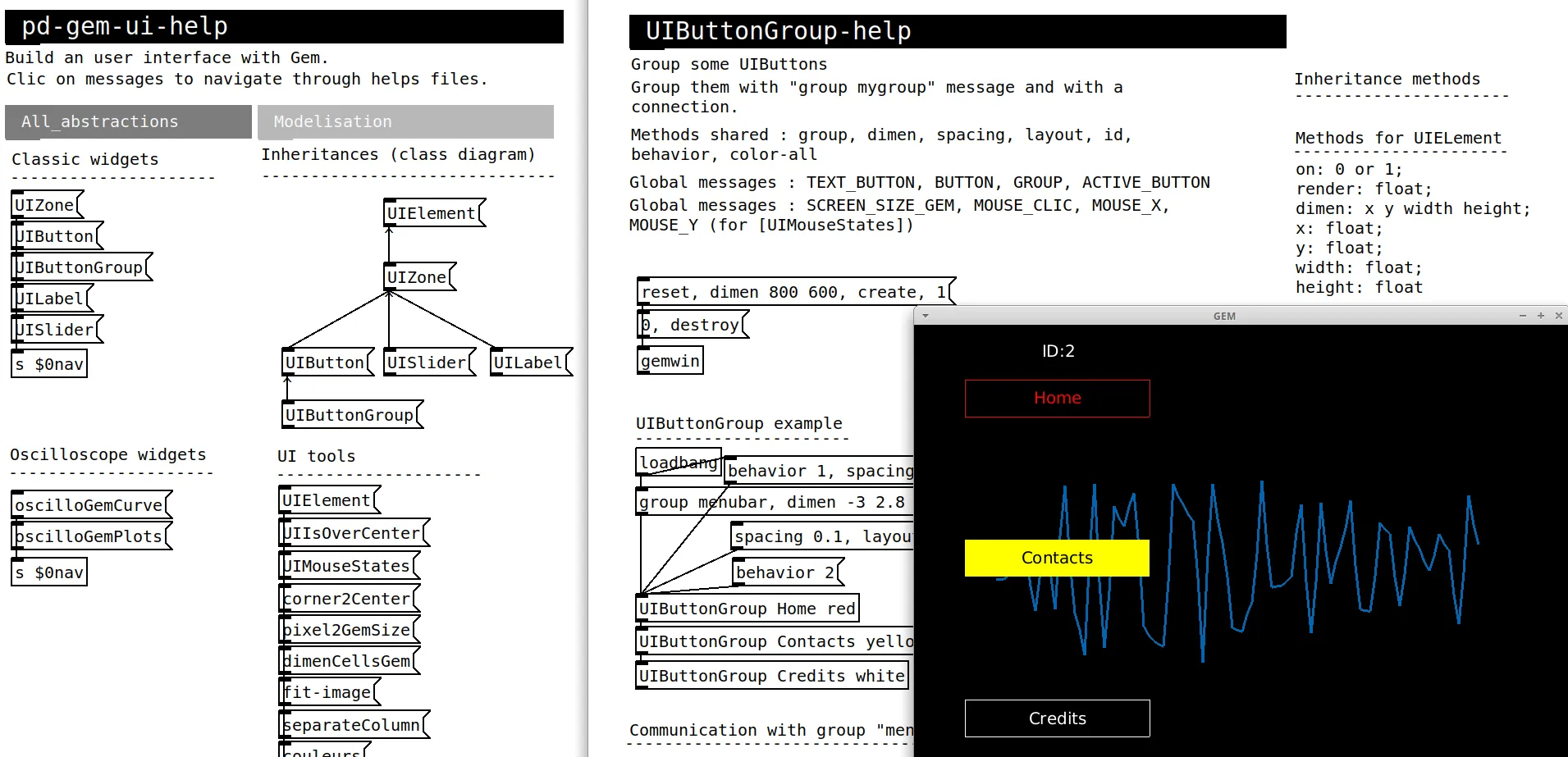
To select an actuator, the user interface displays a set of buttons, then render them.
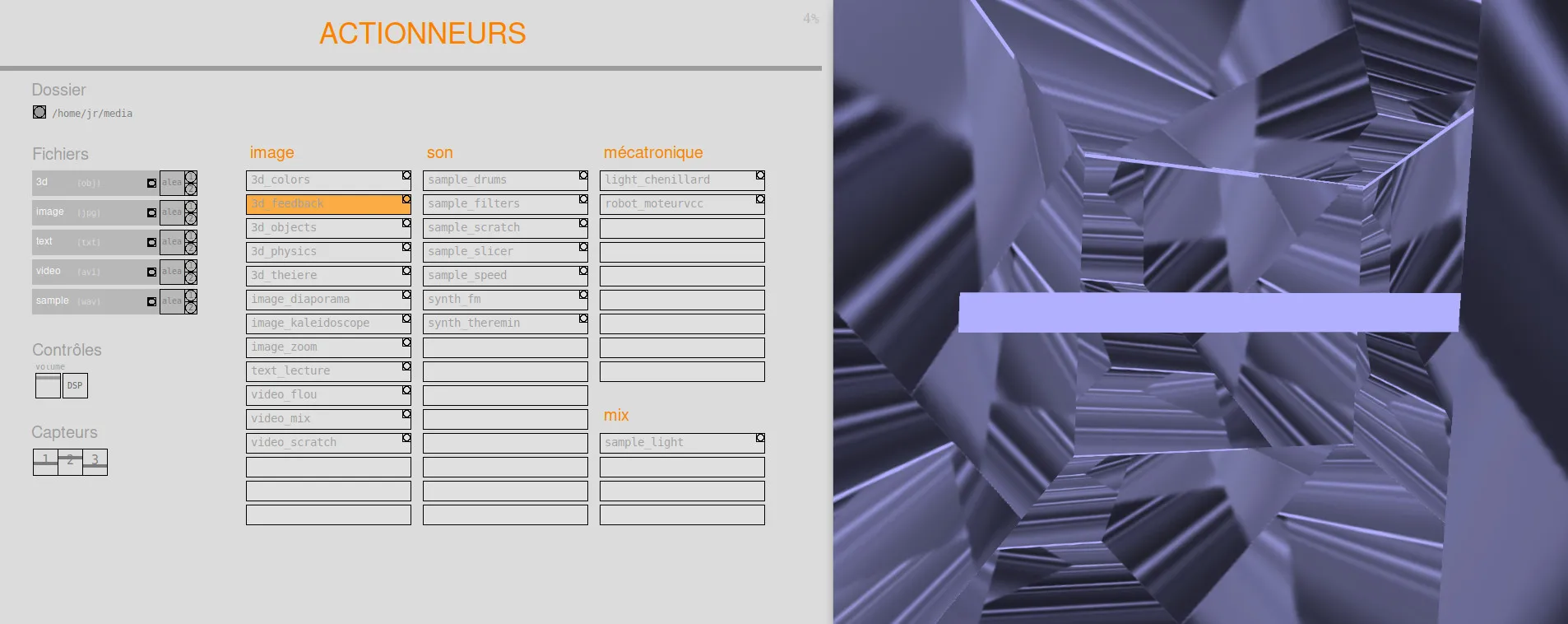
Link: Code
2. Valise pédagogique interactive
La Valise pédagogique création interactive was developed from 2010 to 2011 for the association Kër Thiossane in Dakar and Bamako, as part of the Rose des Vents Numériques project.
It is a hardware, software and documentary package for learning real-time interaction technologies in artistic creation. It serves as a learning platform for a discovery workshop, as well as a tool for simulating and prototyping a work.
It allows artists but also all audiences, including children, to discover the techniques & aesthetics of interactive Art.
2.1. The problem
- Develop an open source tool accessible to all audiences
- Facilitate the process of understanding the interactivity chain
- Experience interactive scenes alone or with others
2.2. The solution
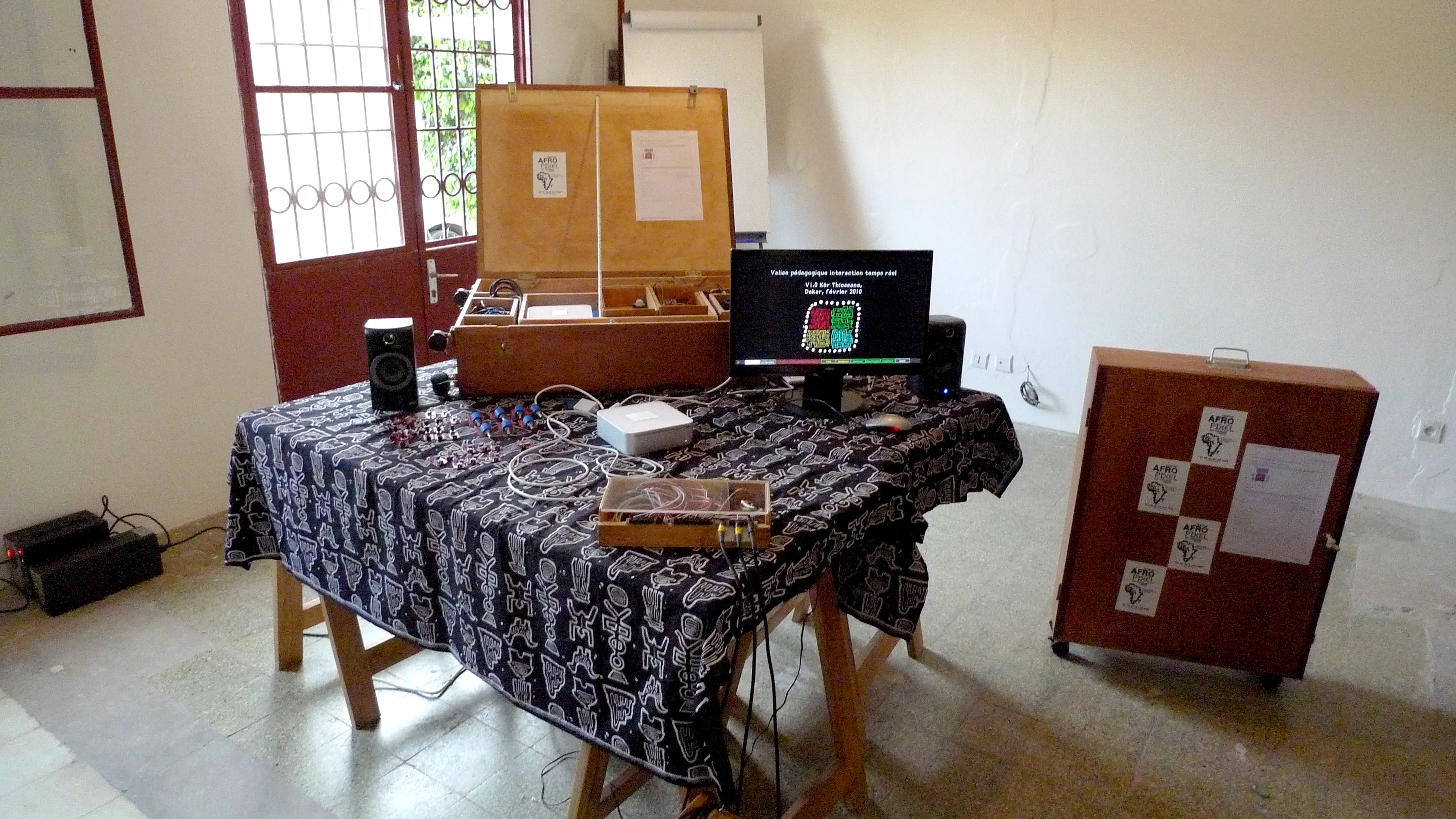
The project is also about a “mobile” hardware set, avaiblable in Dakar and Bamako.
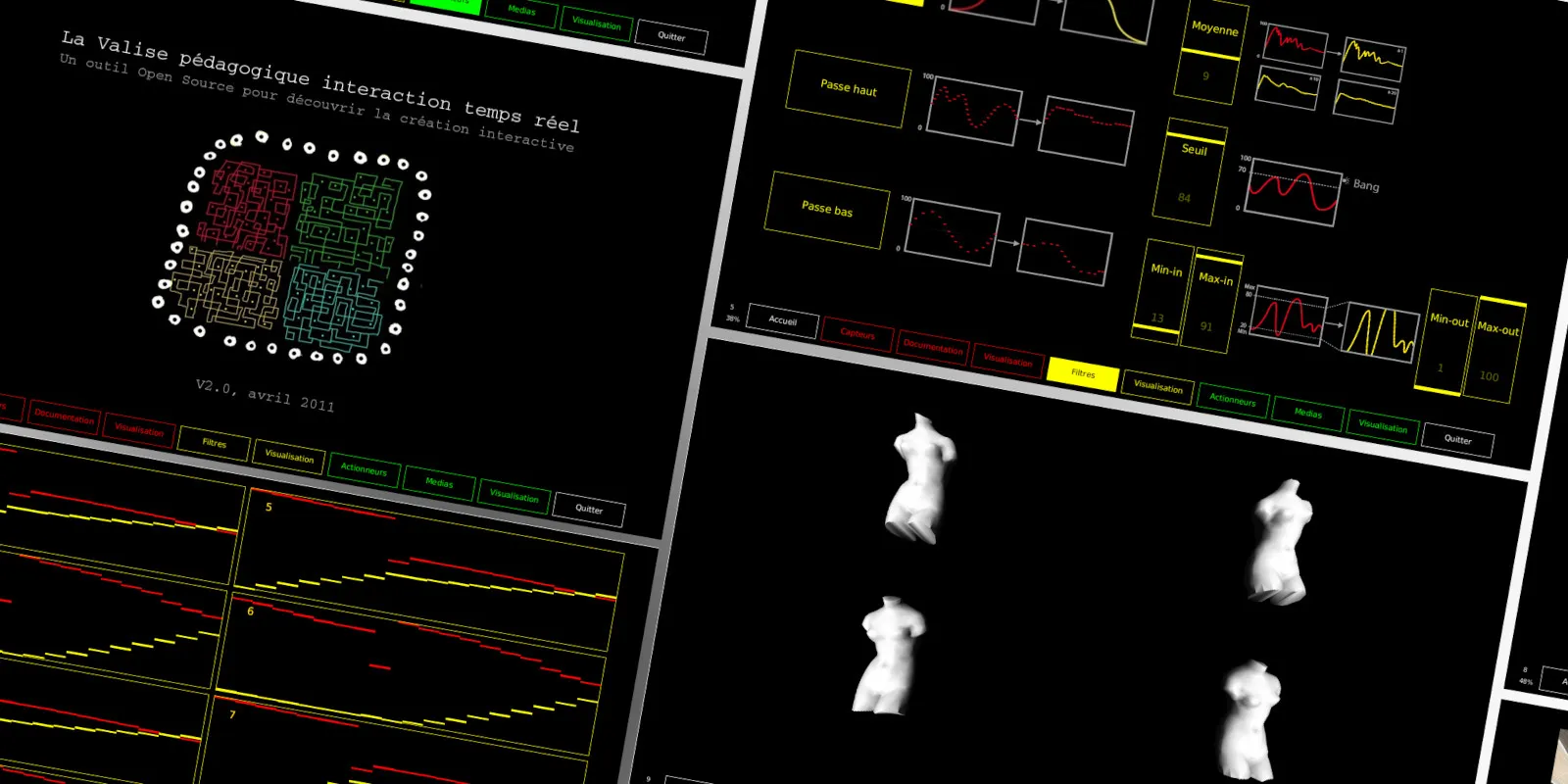
- The graphical interface displays 9 pages following the order of the interactive chain
- As in the previous project, I continued to develop the pd-gem-ui library to create views and graphical components
- Particular attention was paid to the consistency of the experience on the three main platforms: Linux, Max OS, Windows.
3. Things I’ve learned
- As my first real project, I gained experience on setting up a local network
- The project evolved in parallel with my training in IT. It was a playground to use OOP concepts learned at school: abstraction, inheritance, common interface
- I also got my start on Git via Gitorious, a code hosting site that no longer exists.
- I worked on the maintenance and improvement of four versions of the software
- I gained a lot of experience on Pure Data
- I developed fun media actuators like this funny 3D feedback effect:
